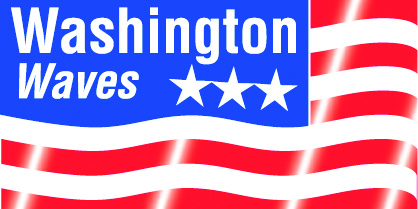Washington, D.C.—Ports and waterways would receive $16 billion as part of a $1.2 trillion bipartisan infrastructure deal reached by the White House and a small group of Republican and Democratic senators.
President Joe Biden cites the framework’s benefits to water infrastructure as part of his effort to promote the package outside of Washington.
“This deal also modernizes our outdated airports, ports and waterways,” Biden said in a speech in La Crosse, Wis.
“And it’s going to strengthen and revitalize our natural infrastructure, like our coastlines and levees, while preparing our physical infrastructure for wildfires, floods and other extreme weather.”
Other infrastructure areas that made it into the bipartisan package of mostly traditional infrastructure include roads, bridges and major projects, $109 billion; passenger and freight rail, $66 billion; airports, $25 billion; broadband, $65 billion.
With no tax increases, proposed revenue sources range from redirecting unused jobless benefits and allowing states to sell or purchase unused toll credits to extending customs user fees and using public-private partnerships and private activity bonds.
Democratic senators also are putting together a much larger package of nontraditional or human infrastructure items they expect to pass without Republican votes under the budget reconciliation procedure.
Even before anyone could take a victory lap to mark the bipartisan framework, Biden came close to derailing it by linking the two proposals more directly than Republicans could accept.
He later issued a wordy clarification that appeared to keep the two-track process alive.
Still, Senate Minority Leader Mitch McConnell (R-Ky.) warned Biden’s “walk-back of his veto threat would be a hollow gesture” unless Senate Majority Leader Chuck Schumer (D-N.Y.) and House Speaker Nancy Pelosi (D-Calif.) follow the president’s lead.
INFRA Grants
Five port projects totaling $153 million were among the 24 projects in 18 states selected for Infrastructure for Rebuilding America (INFRA) grants, Transportation Secretary Pete Buttigieg announced.
Buttigieg’s list totaled $905.25 million, and now Congress has 60 days to review the proposed awardees before the funding can be obligated.
Port projects on the list:
• Philadelphia Regional Port Authority, $49 million, to construct a new multi-use berth to accommodate roll-on/roll-off vessels and dredge the new berth at the Southport facility.
• Georgia Ports Authority, $46.8 million, to build a new inland container port along the I-85/I-985 corridor, which will be linked with the Port of Savannah by a 324-mile intermodal freight rail service.
• Port Authority of New York and New Jersey, $44 million, to modernize a roughly 2.9-mile section of roadway at the north entrance of Port Newark and the Elizabeth Port Authority Marine Terminal and improve nearby roads.
• South Jersey Port Corporation, $9 million, to rehabilitate a roughly 150-linear-foot bulkhead and extend it by approximately 500 feet, dredge the new berth, acquire an adjacent former glass manufacturing facility and refurbish a multimodal rail connection.
• Dubuque, Iowa, $5 million, to increase capacity and make improvements to the Gavilon marine port and rail facility at Dove Harbor terminal at the Port of Dubuque.
“These timely investments in our infrastructure will create jobs and support regional economies, while helping to spur innovation, confront climate change and address inequities across the country,” Buttigieg said.
Navigable Waters Rule
Top House Republican leaders and scores of other GOP members followed a recent move by key senators in weighing in against the Biden administration’s intention to undo the Navigable Waters Protection Rule put in place under then-President Donald Trump.
In a letter to two agencies leading the repeal effort, the House members expressed concern it will regress from the current rule’s “clarity” and reimpose the “vastly overbroad interpretation” of the Obama-era Waters of the United States (WOTUS) Rule.
“The Obama administration’s overreaching WOTUS rule had a disastrous effect on farmers, businesses and families,” they wrote to the leaders of the Environmental Protection Agency (EPA) and the U.S. Army Corps of Engineers.
In addition to House Minority Leader Kevin McCarthy (R-Calif.) and House Minority Whip Steve Scalise (R-La.), the letter was signed by 124 other members of Congress.
EPA announced its plan June 9 and requested the Trump-era rule be remanded, saying it is resulting in “environmental degradation.”
On June 21, key Republican senators challenged EPA’s lack of transparency and requested information by July 5 to back up its claim.
CG/NTSB Agreement
The Coast Guard and the National Transportation Safety Board (NTSB) signed an updated Memorandum of Understanding (MOU) to institutionalize best practices developed during recent joint investigations including El Faro, Stretch Duck 7, Golden Ray and Conception.
The two agencies entered into the MOU to facilitate cooperation as they carry out their respective statutory missions and to determine which agency will lead certain major marine casualties and accidents involving public and non-public vessels.
Significant changes include those regarding NTSB interaction with Coast Guard-led incident response operations in accordance with Coast Guard Incident Command System protocols, NTSB protocols to utilize its Transportation Disaster Assistance resources to provide support to next of kin when the Coast Guard is the investigative lead and the addition of four new appendixes.
The MOU is available at NTSB-USCG-MOU-20210617_FINAL.
CG Navigation Center
Capt. Scott Calhoun assumed command of the Coast Guard Navigation Center (NAVCEN), which provides significant services to the nation’s waterways.
Previously Calhoun served as the senior maritime safety and security advisor to the U.S. Transportation secretary and coordinated policy to ensure the safety, security and resiliency of the marine transportation system.
NAVCEN responds to the needs of civil GPS users.
Its services include conducting maritime risk and traffic analysis for the safety and efficiency of ports and waterways, creating visualization products on demand from the archive of the vessel Nationwide Automatic Identification System, disseminating navigation and GPS information through a 24/7 Navigation Information Service watch and coordinating investigations of GPS outage reports.
Calhoun relieved Capt. Mike Glander, who led NAVCEN for three years and retired after 28 years of service.




